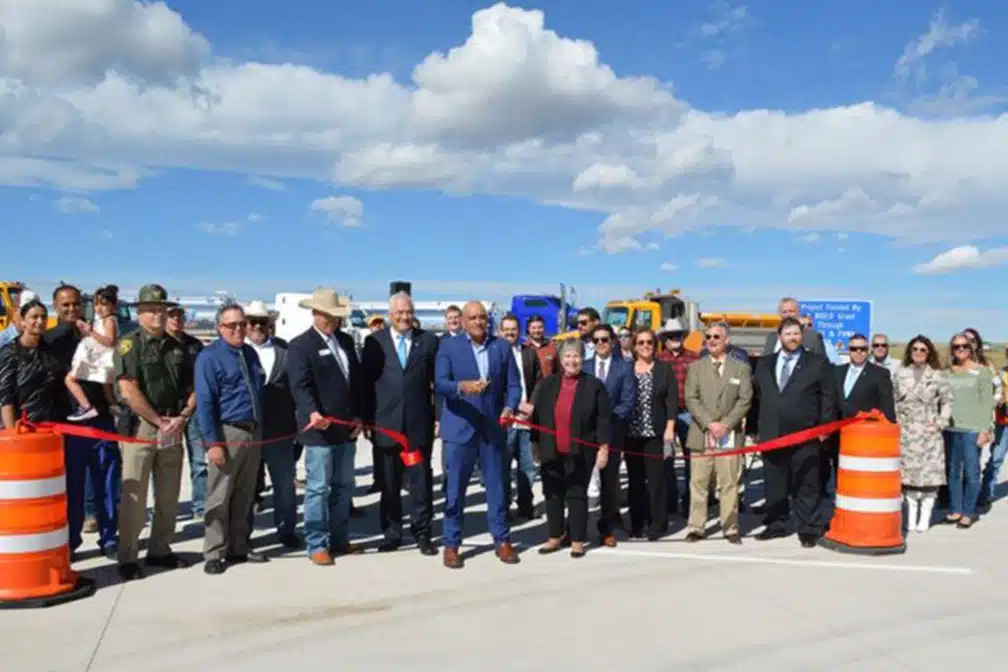A Closer Look at the Peterbilt SuperTruck II: Its Futuristic Design, Hybrid Power, and How Peterbilt is Advancing Technology and Driving Innovation.
More
May 19, 2024 7:27 pm

LARAMIE, Wyo. — In a significant development for the transportation industry, Federal Highway Administrator Shailen Bhatt joined federal, state, and local officials on September 20 to inaugurate 200 new truck parking spaces along Interstate 80 near Laramie, Wyoming. This initiative, backed by the U.S. Department of Transportation, is poised to enhance safety and streamline freight movement on one of the nation’s busiest highways.
Interstate 80 plays a pivotal role in the efficient movement of goods across the United States, making it a crucial transportation artery. Wyoming Department of Transportation (WYDOT) Director Darin Westby emphasized the importance of this project, stating, “Interstate 80 through Wyoming is such a critical highway for freight movement nationwide. Thanks to the Federal BUILD grant, these interstate upgrades will help improve safety for truck drivers as they drive to and through the state to deliver the goods and supplies that communities depend on.”
The U.S. Department of Transportation (USDOT) provided a total of $27.7 million in funding for this project, with a substantial $20 million coming from the Better Utilizing Investments to Leverage Development (BUILD) grant program, now known as the Rebuilding American Infrastructure with Sustainability and Equity (RAISE) grant program.
The I-80 Winter Freight Improvement Project encompasses the construction of approximately 5.5 miles of passing lanes and two truck parking areas, each capable of accommodating 100 trucks, along I-80 between Laramie and Rawlins in southeastern Wyoming. These parking areas feature Intelligent Transportation Systems improvements that aim to enhance safety and the flow of freight, particularly during challenging winter conditions when snow and ice storms have historically led to lengthy backups and severe accidents. The improvements offer a safe refuge for truckers while allowing for efficient snow removal operations to keep the interstate accessible following adverse weather events.
During the ribbon-cutting ceremony, Administrator Bhatt unveiled an innovative data visualization tool designed to simplify access to localized freight data. This tool is expected to play a pivotal role in helping states and local governments plan for the growing demands of freight transportation and the movement of goods across the country.
“Supply chain issues are critical for our economy. Truck parking shortages make our roads less safe and the movement of goods to market less efficient,” Bhatt stated. “Today we’re addressing the problem on two fronts — by adding new parking capacity so truckers on I-80 have a safe place to rest and by expanding the data available on freight movement so state and local agencies can be better equipped to understand and plan for truck parking needs.”
With the transport of goods by truck on the rise, the newly launched Freight Analysis Framework (FAF) Data Visualization Tool offers an accessible way to analyze a variety of private sector freight data at national, state, and local levels, facilitating an understanding of growth trends in the transportation industry. The tool combines data based on dollar value, tonnage, mileage, commodity, and mode of transport, reflecting goods movement by truck, rail, air, water, or pipeline. It includes historical data on freight flows dating back to 1997 and projections through 2050, accounting for high- and low-freight demand scenarios. This comprehensive information can be displayed to examine interstate and intrastate trade flows and spans from the state level down to specific metro areas, providing invaluable insights into complex freight flow patterns.
Administrator Bhatt emphasized that this new tool will empower aspiring grant applicants to strengthen their proposals for Bipartisan Infrastructure Law (BIL) funding, bridging the gap for small cities, towns, rural communities, and Tribal governments that may lack experienced data experts on staff. By harnessing the insights from this tool to comprehend goods movement better, these non-traditional applicants can enhance their planning, project prioritization, and federal funding applications, making a compelling case for project funding.
In conclusion, the opening of 200 new truck parking spaces along I-80 and the launch of the Freight Analysis Framework Data Visualization Tool mark significant advancements in enhancing safety, efficiency, and planning within the transportation industry. These initiatives exemplify the commitment of federal, state, and local authorities to address the evolving needs of freight transportation and to support the movement of goods critical to communities across the United States.
A Closer Look at the Peterbilt SuperTruck II: Its Futuristic Design, Hybrid Power, and How Peterbilt is Advancing Technology and Driving Innovation.
MoreAs we navigate through the ever-evolving landscape of the trucking industry, it's crucial to stay informed about the latest trends and developments. Recent findings from ACT Research
MoreIn a significant move that underscores the importance of understanding the financial intricacies of trucking operations, the American Transportation Research Institute (ATRI) recently extended an invitation to
MoreThe American Trucking Associations (ATA) has expressed strong opposition to the Department of Justice's proposed rule of marijuana reclassification.
MoreIn an effort to increase efficiency and sustainability in Trucking, Phillips Industries has launched their new, advanced, stick-on solar panels
MoreThe 2024 CVSA International Roadcheck is scheduled for May 14-16. Over 72 hours, inspectors across the US will conduct nearly
MoreAutomated License Plate Readers are a major advance in law enforcement technology but they raise significant privacy and oversight challenges.
MoreThe EPA's latest emission standards detailed in a final rule issued on March 29 are sparking vigorous debate within the
More